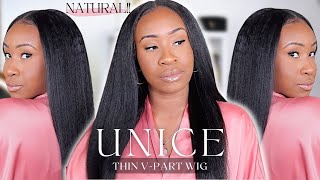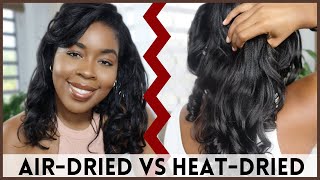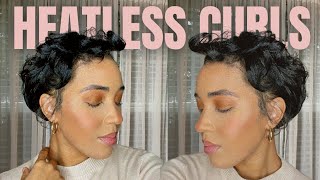The Benefits Of And How To Henna Relaxed And Natural Hair Part 2

In the previous post we took an in depth look at what henna is, how it works and the pros and cons of using henna* as part of a healthy hair regimen. In this post we want to take a more practical approach and get to ‘mixin and applyin’. The whole point of processing the henna plant is to harvest the dye that it produces to reap the benefits of it.
When it comes to mixing, it is often recommended that you use something that is acidic or at a pH level of about 5.5 for ultimate dye release of your mixed henna. At this point we should note that there are studies that have proven that acidic substances such as lemon juice actually inhibit the release of henna dye and that methods of fermentation using plain water seems to work the best.
This however depends on what side of the world you are on, how you define fermentation and the type henna you purchase. Without arguing semantics, the basic science states that acidic liquid dissolves the cellulose in the powder allowing the lawsone (the dye in the henna) to be available to bind with the keratin particles in your hair.
We are getting sciencey again but bare with me. You see, its important that the hydrogen atoms in the lawsone remain intact for any binding action to take place. If it remains intact the lawsone should bind without any issues to the keratin, producing a rich dark color, if this doesn’t happen you will be left with something of an orange persuasion which also means less strengthening benefits.
The Henna Mix
It is difficult to say exactly how much liquid to add to your mix, but you want a paste like consistency. The best way to do this is to add a little liquid at a time until you get something similar to mashed potatoes or thick cake batter. Seal the bowl that you mixed the henna in and store in a cool dark place overnight for the dye release magic to happen.
Other popular acidic based liquids for mixing henna include green tea which is slightly acidic, often used by hair gurus such as Curly Nikki or coffee which is what I get at my henna* salon. Rain water, grapefruit juice, wine and cola are all great candidates as well but somehow the idea of pouring a can of coca cola in my hair just isn’t as appealing as coffee but to each his own.
How To Apply Henna To Your Hair
Application of henna is simple enough. You will need to don an old t-shirt that you don’t mind getting stained and protect your floor with either old towels or newspaper especially if this is your first time applying it yourself.
Apply the paste to your hair in sections making sure that all your hair is evenly coated, like you would with a conditioner. Depending on the length and thickness of your hair, you may find that you need up to 300 g of henna. You may want to put on gloves otherwise your hands will have a weird orange tint for about a week or so afterwards.
Cover you head with plastic saran wrap and let the henna sit in your hair for anywhere from 3- 8 hours; you can even leave it in overnight. In the morning rinse thoroughly with plenty of water and co-wash with a moisturizing conditioner* to restore balance to your strands.
Specific Considerations For Relaxed Hair
Though the process is pretty much the same for our ladies with relaxers, they are special requirements. It is imperative that if your hair is relaxed and you choose to use henna that you only use henna of the purest quality. In part 1 we mentioned that some manufacturers like to mix henna with metallic salts that will react with the chemical relaxer causing your hair to literally melt. Scared yet? You should be.
If you are not sure about the quality of your henna, grab some shed hair from your brush and do a test of your mix on the hair. If the hair doesn’t disappear before your eyes, then you know that you are good to go.
Henna of the purest quality is great for relaxed hair because the hair is naturally porous anyway which means that it can repair the normal ‘damage’ caused by the relaxer thereby making your hair stronger
Although she is transitioning to natural now, TheTruthisHair demonstrated her application of henna and indigo* to her relaxed hair in a two part tutorial. At this point it would be great to mention that indigo* powder added to your henna mix is used if you don’t like the red tint that henna gives. It leaves your hair jet black and is an awesome way to cover grey hair as henna alone will make grey hair look orange.
4 Tips To Avoid Dryness And Loss Of Curl Pattern When Using Henna
1. If you experience extreme dryness from henna, deep treat the hair straight after with a moisture based product. Usually it should be sufficient to co-wash with a moisturizing conditioner* after rinsing the henna out.
2. For natural ladies, to avoid loosening of the curl pattern, try to add Amla* powder to your mix, amla* powder is a natural curl enhancer.
3. Another way to avoid dryness is to try a henna gloss instead of a straight henna. The gloss is also great if you don’t have time for a full blown henna as the slip and moisture will help with the application and rinse out process. CurlyNikki has a great recipe which essentially involves mixing your full strength henna as normal and use one cup of conditioner while trying to maintain consistency in the mix. Apply the gloss to damp hair in sections and let it sit for a few hours. The mix should be easier to rinse out due to the conditioner, you can also deep treat the hair after as suggested previously.
4. Some ladies only apply henna to the roots of their hair so that their strands are not weighed down by the henna causing a loss of curl pattern.
It’s worth mentioning that very coily naturals will probably not have an extreme loosening of curl pattern, results are usually subtle. If you have 3c or looser curls then results may be a bit more pronounced.
Well there you have it, let us know what you think about having henna as a regular part of your regimen. Has your hair reaped the benefits yet?




